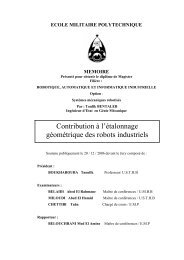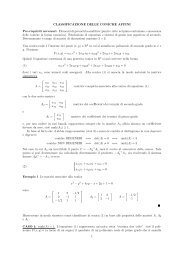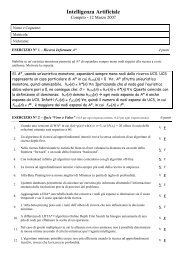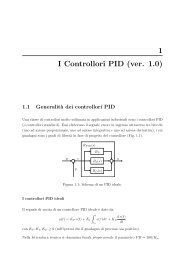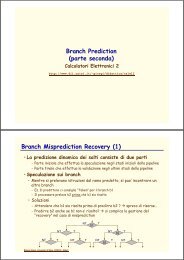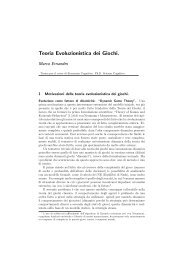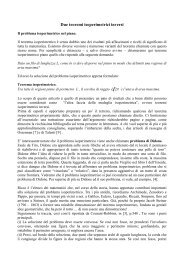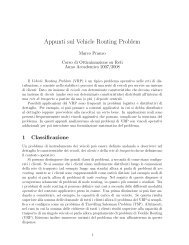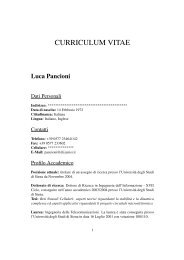Condizioni di KKT e Programmazione Lineare - Dipartimento ...
Condizioni di KKT e Programmazione Lineare - Dipartimento ...
Condizioni di KKT e Programmazione Lineare - Dipartimento ...
Create successful ePaper yourself
Turn your PDF publications into a flip-book with our unique Google optimized e-Paper software.
Dim.– Dalla (16)<br />
(c T − u ∗T A)x ∗ = c T x ∗ − u ∗T Ax ∗ = 0<br />
ossia, dal momento che Ax ∗ = b,<br />
c T x ∗ − u ∗T b = 0.<br />
3 Il problema duale<br />
Le con<strong>di</strong>zioni <strong>di</strong> <strong>KKT</strong> con riferimento a un certo problema <strong>di</strong> PL possono essere inter-<br />
pretate in modo più efficace introducendo un altro problema <strong>di</strong> PL strettamente legato,<br />
come vedremo, al primo.<br />
Definizione 1 Dato un problema <strong>di</strong> PL in forma standard (7), definiamo problema<br />
duale il PL:<br />
max b T y (17)<br />
A T y ≤ c<br />
Nel contesto <strong>di</strong> questa definizione, il problema (7) viene in<strong>di</strong>cato come problema pri-<br />
male. Per capire il significato <strong>di</strong> questa definizione, scriviamo le con<strong>di</strong>zioni <strong>di</strong> <strong>KKT</strong> per<br />
il problema duale. Si osservi che, essendo (17) un problema <strong>di</strong> massimizzazione, nella<br />
funzione lagrangiana la funzione obiettivo è cambiata <strong>di</strong> segno. In<strong>di</strong>cando con v i molti-<br />
plicatori <strong>di</strong> Lagrange, abbiamo allora<br />
L(y, v) = −b T y − v T (c − A T y)<br />
e andando a scrivere le con<strong>di</strong>zioni <strong>di</strong> <strong>KKT</strong>:<br />
∇yL(y ∗ , v ∗ ) T = −b T + v ∗T A T = 0 T<br />
(18)<br />
c − A T y ∗ ≥ 0 (19)<br />
v ∗ ≥ 0 (20)<br />
(c − A T y ∗ )jv ∗ j = 0 per ogni j = 1, . . . , n (21)<br />
4



